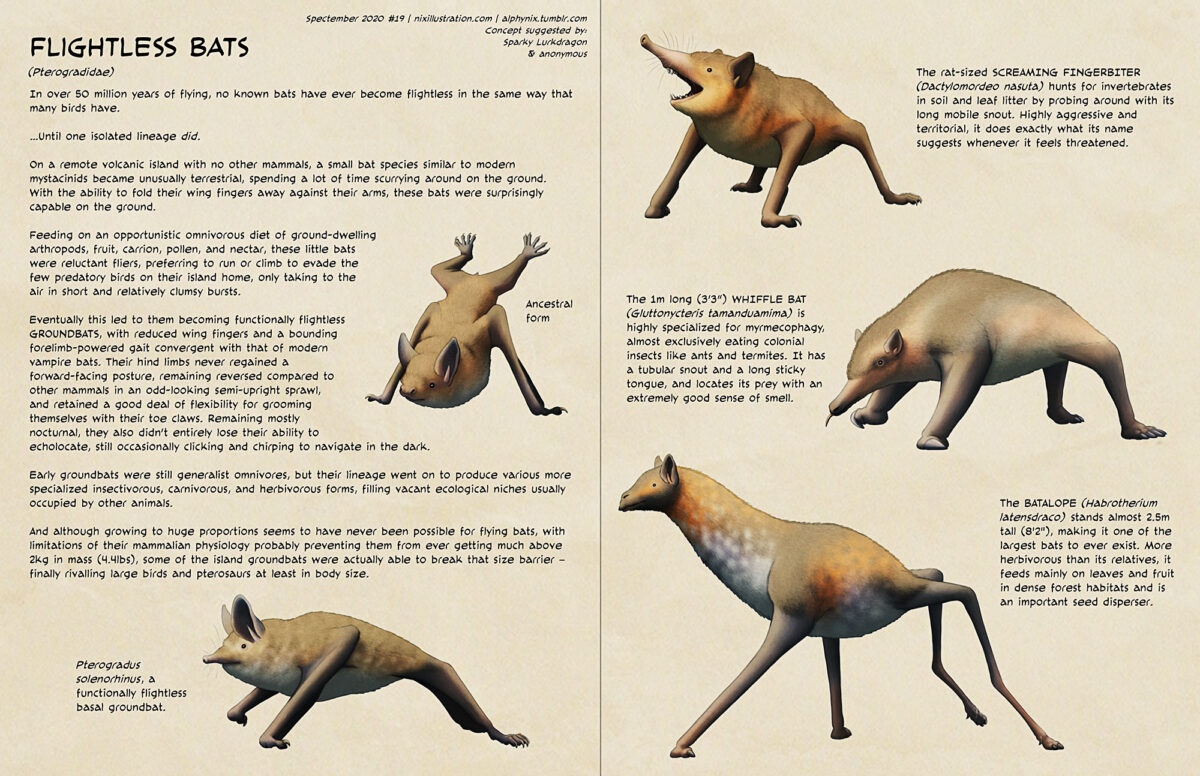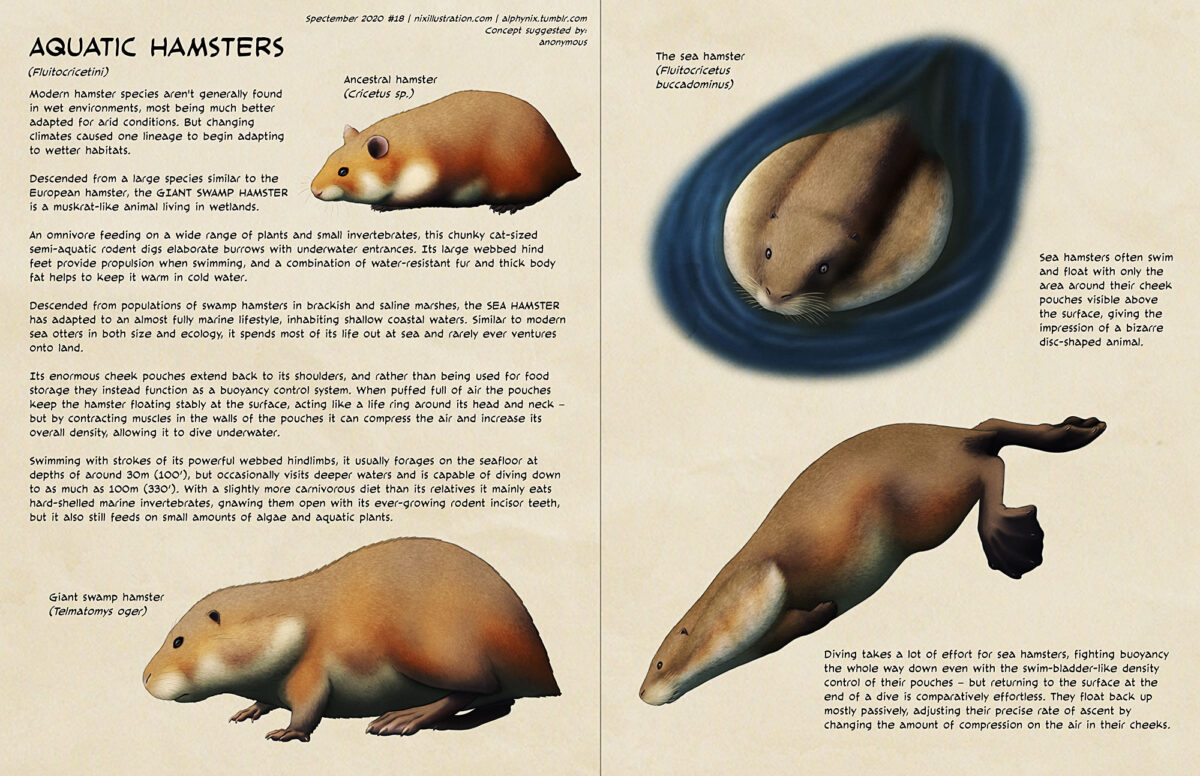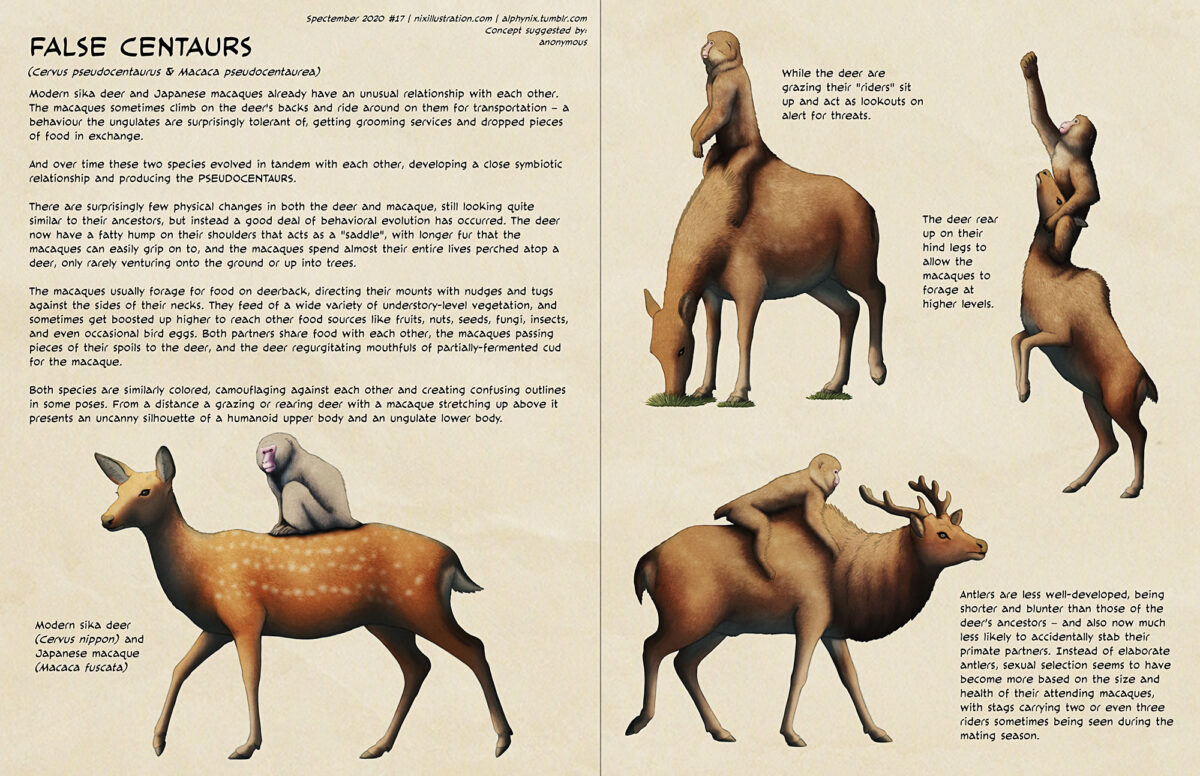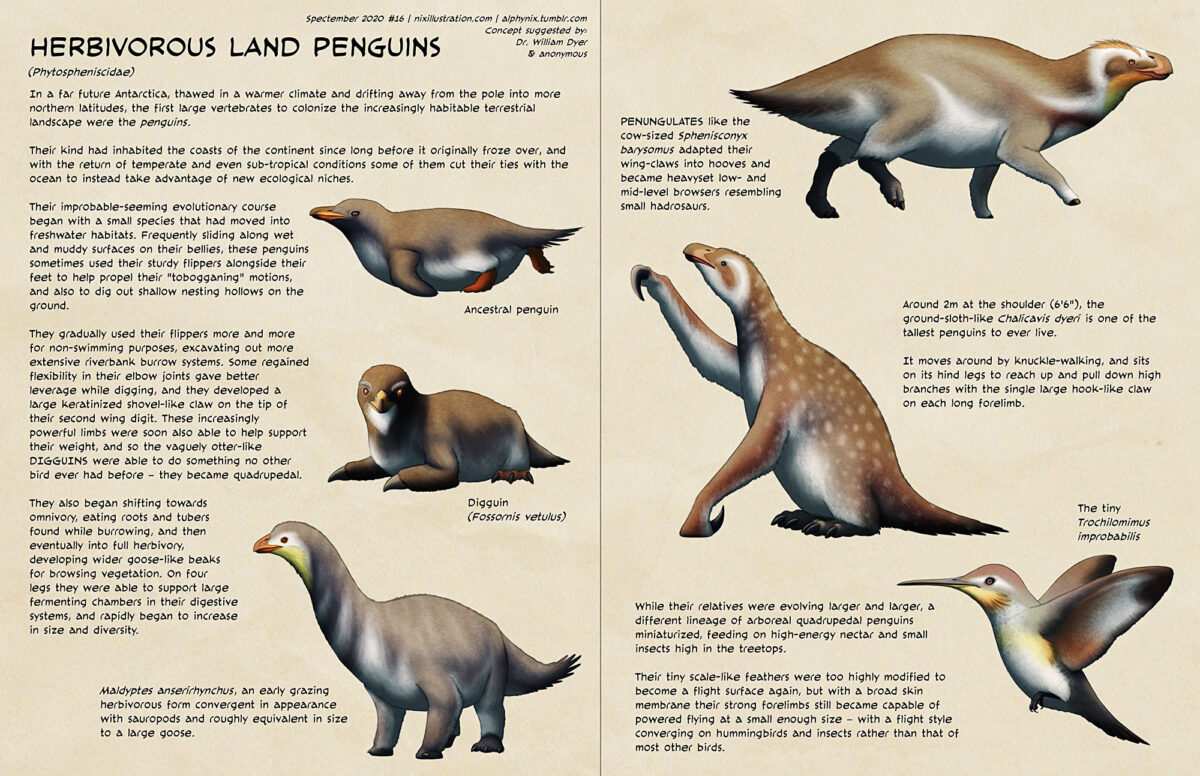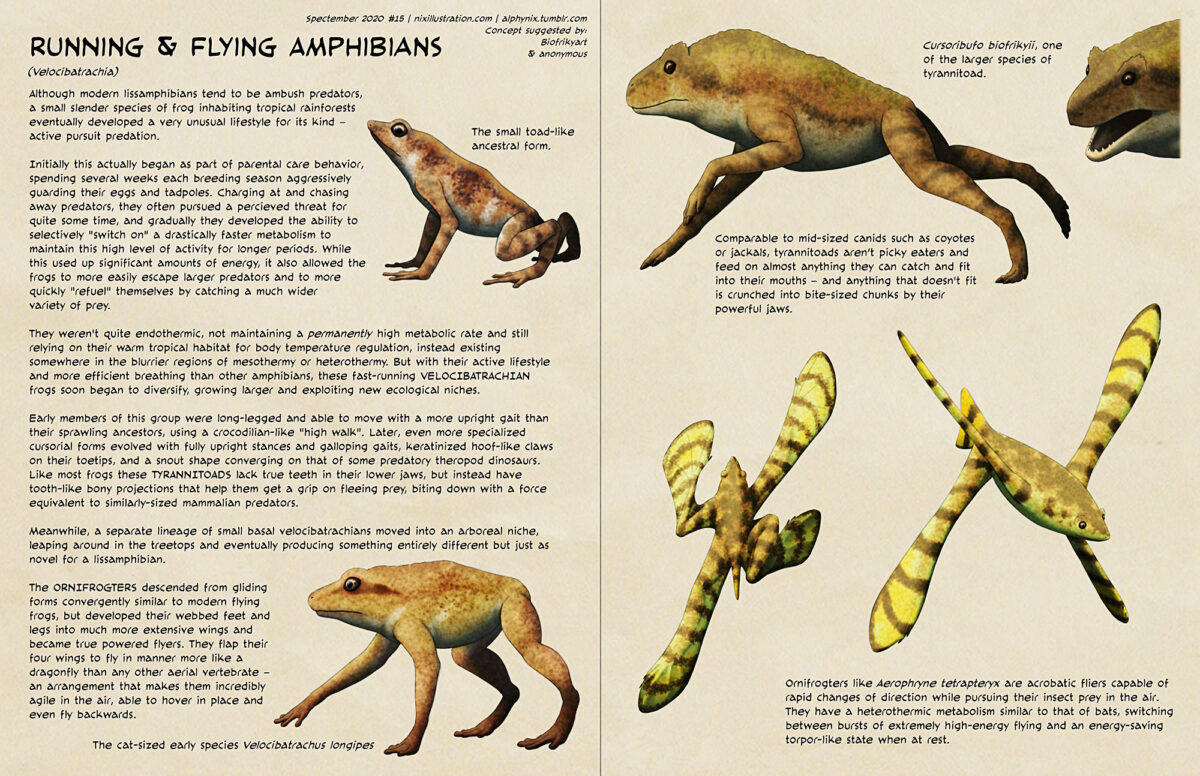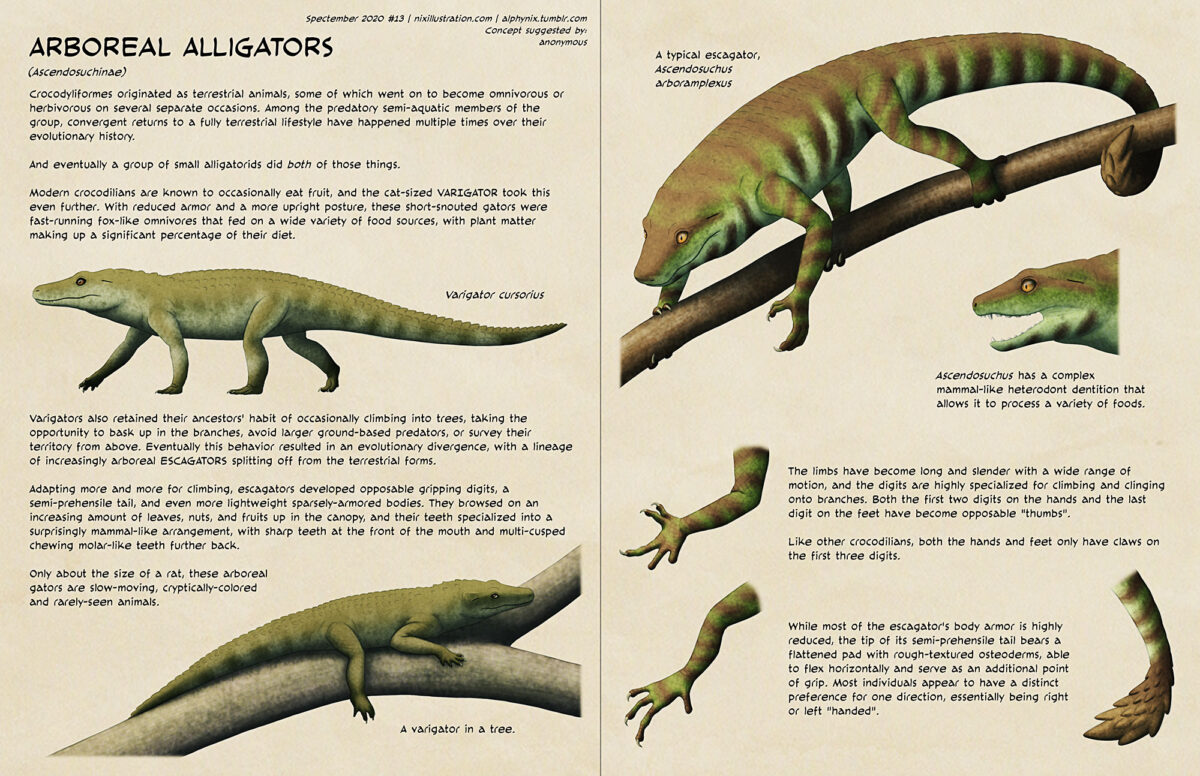(Darren Naish over on TetZoo has already done much more extensive coverage on this subject. Check out his series of posts here: part 1 – part 2 – part 3)
The concept of long-extinct prehistoric animals surviving into modern times has been around since at least the mid-1800s, with Jules Verne’s 1864 novel Journey to the Center of the Earth being one of the earliest well-known examples. Many many other pieces of media have since explored the concept, especially with the ever-popular non-avian dinosaurs, but often the depictions were of ancient relict stock species virtually unchanged after millions of years.
Two things in the 1980s began to change this idea, however. Obviously Dixon’s The New Dinosaurs in 1988 was a major influence – but there was also the infamous dinosauroid.
Emerging from some rather exaggerated ideas in the 1970s about the level of intelligence of relatively “big brained” troodontids, the dinosauroid started as a “thought experiment” in a 1982 article by paleontologist Dale Russell and taxidermist Ron Séguin. Unfortunately the resulting creature was heavily anthropomorphized, and while every element of its anatomy was justified as being the “best” evolutionary solution for a big-brained bipedal creature there was obviously a lot of human-centric unconscious bias in its design.
But it was wildly popularized in media at the time, and incarnations of it have regularly appeared in dinosaur-based pop culture ever since. (And it’s also unfortunately become intertwined with antisemitic conspiracy theories, often being used as a visual representation of “lizard people”.) Many other hypothetical sapient dinosaurs have appeared in various works over the years, usually also derived from maniraptoran theropods – although exceptions like Star Trek‘s hadrosaur-descended Voth do also exist.
But getting back to non-sapient dinosaurs… let’s talk about The Speculative Dinosaur Project!
Also known as “Specworld” or just “Spec” for short, this was an absolutely massive collaborative online worldbuilding project in the same vein as The New Dinosaurs – a world where the K-Pg asteroid impact never happened, there was no mass extinction, and non-avian dinosaurs continued to dominate global ecosystems.
Started by a July 2001 thread on the Dinosaur Mailing List, Specworld quickly branched off into its own dedicated website. The main contributors and project runners were Daniel Bensen, David Marjanović, Brian Choo, and Mette Aumala, but there was a huge list of other names involved over the years, and many of them went on to become professional paleontologists, biologists, writers, and illustrators.
(Additional contributors included Tim Morris, Clayton Bell, Brett Booth, João Boto, Steve Brusatte, Stacey Burgess, Martin Chavez, Morgan Churchill, Anthony Docimo, Michael Habib, Michael Hanson, Daniel R. Heald, Jonas Holjer, Emile Marc Moacdieh, David Namen, Eric Christopher Ømtvedt, Donald Ridenbaugh, Edgar Segovia, Ville Sinkkonen, Chris Srnka, and Raymond Tobin.)
Presented as the observations of scientists studying a parallel-reality version of Earth, full of the results of 66 million years of divergent evolution, Specworld developed a huge variety of speculative species and ecosystems.
Both avian and non-avian dinosaurs were abundantly represented (as would be expected in something called The Speculative Dinosaur Project!), with creations such as arboreal ornithopods, spiny theropods, huge grazing sail-backed sauropods, ant-eating noasaurs, and the disgusting “dire rhea” and “rectal probe”. But groups other than dinosaurs were also given a fair amount of attention, including butt-gilled turtles, ankylosaur-like crocodiles, whale-like squid, burrowing sea cucumbers, skunk-like geckos, bone-crushing platypuses, gliding multituberculates, cookiecutter tadpoles, symbiotic spiders, and terrifyingly toxic plants.
At one point there were plans to eventually publish all this as a physical book, but it never came to fruition.
Specworld’s progress began to stall around 2005 or so when Daniel Bensen stepped down from the main editor role, unable to devote enough time to it while in college. Others continued developing Spec for several years afterwards, making revisions to fit in with newer paleontological discoveries that had made some elements of the world outdated, but the original website was abandoned in late 2008 and discussion was moved to a Yahoo Group — which then shut down in 2019 with the closure of that service.
Most of Spec’s content is still around, but currently everything seems to be a bit fragmented. Parts are archived on the Speculative Evolution wiki, along with a Russian site featuring a saved English version, and much of the old site can still also be viewed on the Internet Archive Wayback Machine.
Tomorrow: All Yestermorrows and some more aliens.

